Goldendoodle Dental Care: Tips for Keeping Your Dog’s Teeth Healthy and Clean
Goldendoodle dental care is essential. Given their genetic makeup, Goldendoodles are prone to certain dental issues that can be a real pain, not just for them but for you too. Dental issues don’t just cause smelly breath, they can result in more serious issues, even resulting in heart, kidney, or liver disease.
But no worries, we’ve got you covered. In this guide, we’re breaking down everything you need to know about Goldendoodle dental care.
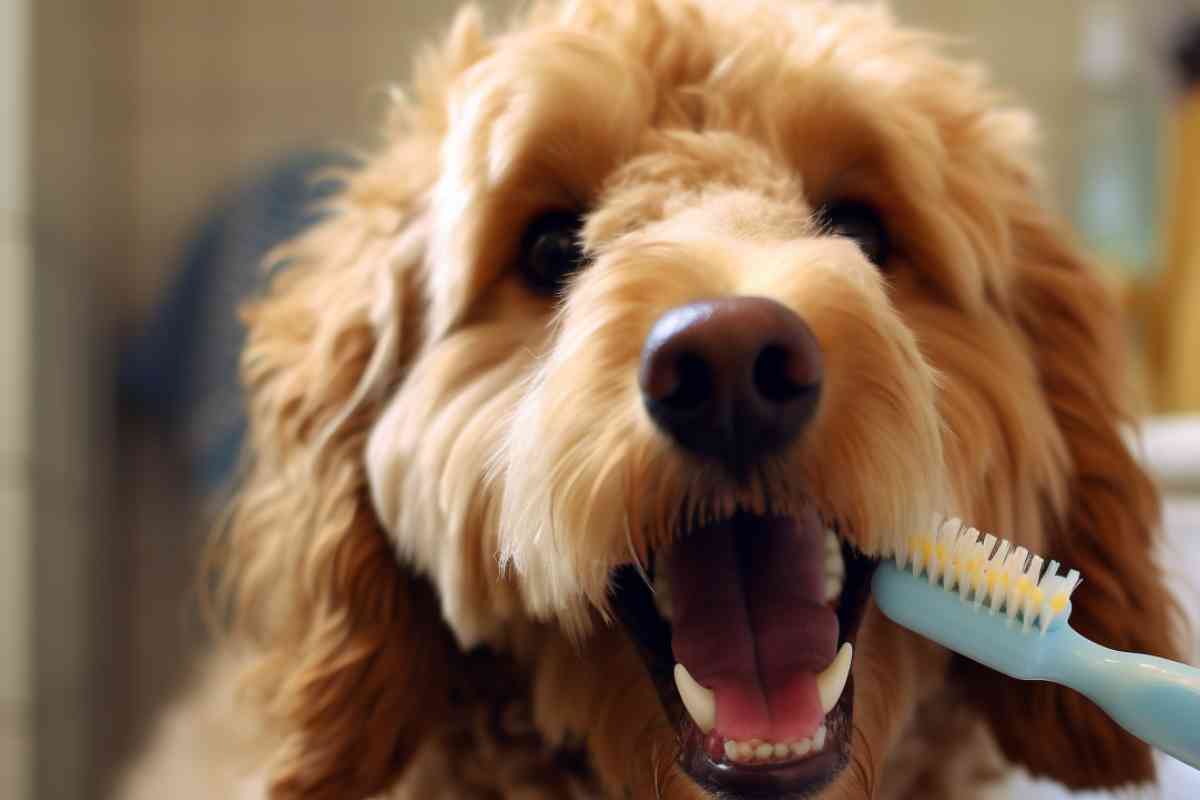
What are some tips for keeping your dog’s teeth healthy and clean?
The best way to keep your dog’s teeth healthy is to brush their teeth daily or at least weekly. You can also give your dog chew toys that protect rather than hurt its teeth. You can also send your dog to a dog dentist for a cleaning or more complex treatment.
From brushing techniques to choosing the right dental treats, we’re here to help you keep that Goldendoodle grin as radiant as ever.
Related posts:
- Best Dog Food for Goldendoodles: Top Picks for Optimal Health
- When Goldendoodles Stop Teething And Lose Their Puppy Teeth
- 6 Reasons Why Your Puppy Is Chewing On You (Nipping, Biting, Mouthing)
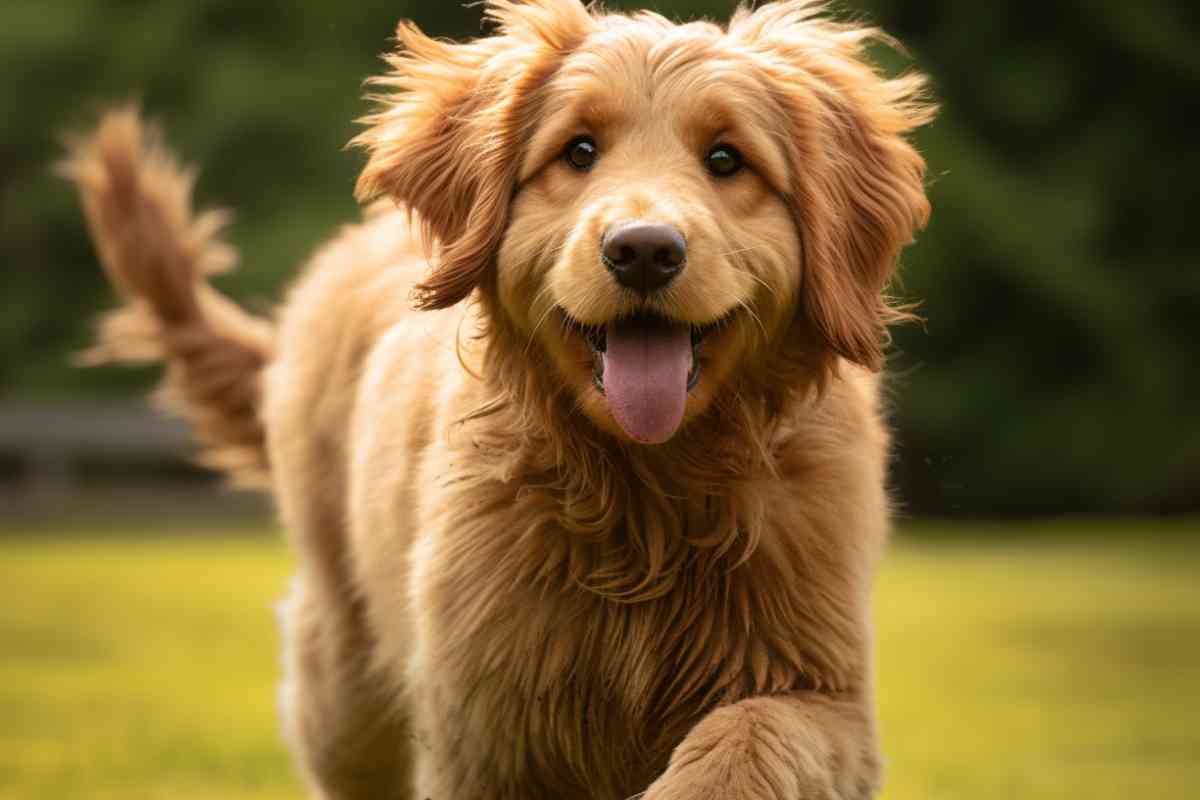
Are Goldendoodles Vulnerable to Dental Health Problems?
Yes, Goldendoodles can be vulnerable to dental health problems, and much of this vulnerability can be attributed to their genetic makeup which they inherit from their parent breeds, the Golden Retriever and the Standard Poodle.
Goldendoodles that inherit the slender snout of the Poodle parent breed are more prone to having crowded teeth and misalignment issues compared to wider snouted breeds.
This crowding can lead to a buildup of plaque and tartar, which, if not addressed through proper dental care, can result in significant dental health problems including signs of gum disease. Utilizing dental treats or dental sticks can be a beneficial part of maintaining their dental health, helping to reduce tartar buildup and promote healthier gums and teeth.
Tooth Troubles for Toy Goldendoodles
Moreover, miniature and toy Goldendoodles face additional challenges as their smaller size often means their teeth are more crowded compared to larger breeds.

This crowding can make it difficult to maintain oral hygiene, leading to a higher predisposition for dental issues such as cavities and gum disease.
It is essential for Goldendoodle owners to be vigilant about their pet’s dental hygiene, incorporating habits such as regular brushing with appropriate tools like human toothbrushes or dental wipes to mitigate these issues.
Furthermore, it is advisable to consult with a reputable breeder when you plan to get a Goldendoodle puppy to understand the potential health issues, including dental problems, that may arise due to the genetic traits the pup may inherit.
Regular check-ups with a groomer who is experienced with the breed can also help in maintaining the dental health of your Goldendoodle, as they can often spot issues before they become serious problems.
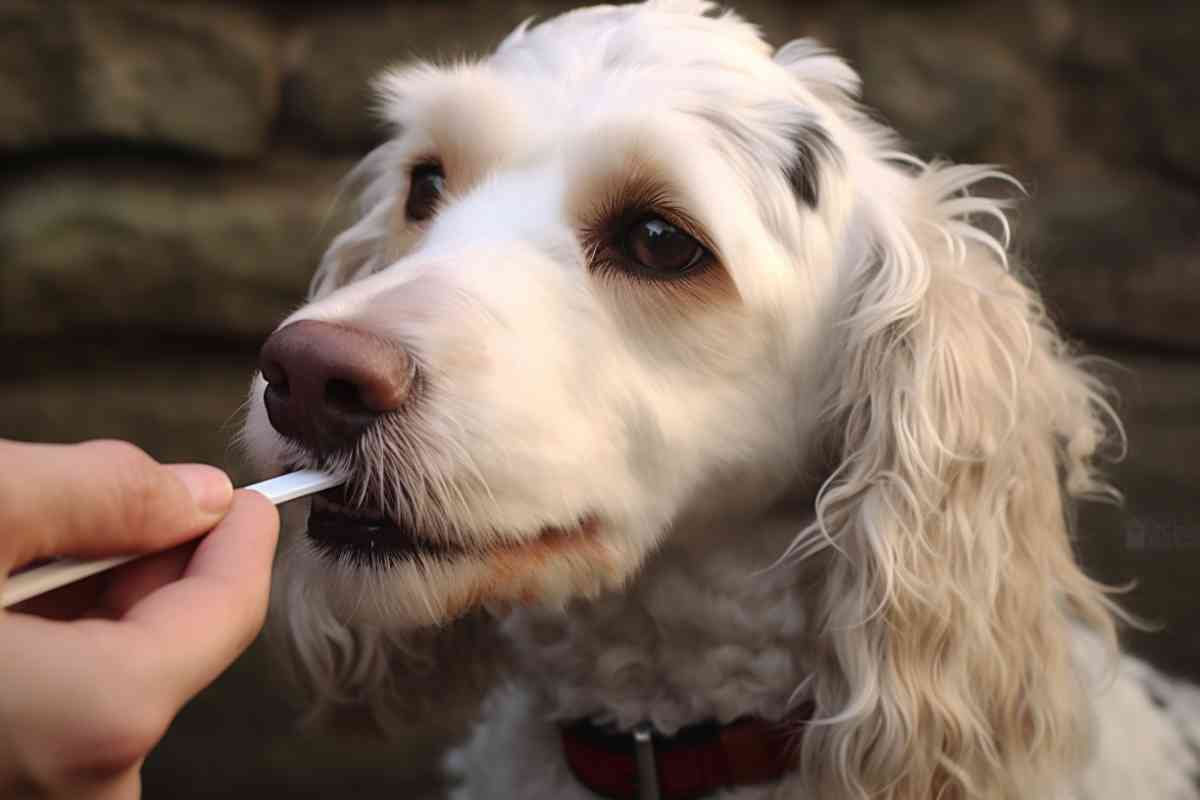
Brushing Your Goldendoodle’s Teeth: A Step-by-Step Guide
Proper dental care is essential in maintaining your Goldendoodle’s overall health. Below, we delve into a detailed guide on how to effectively brush your Goldendoodle’s teeth to prevent plaque build-up, tartar buildup, and other dental health problems.
Gather the Necessary Supplies
Before you begin, ensure you have all the necessary supplies at hand. This includes:
- A dog-specific toothbrush or human toothbrushes with soft bristles
- Dog-friendly toothpaste, often available in flavors like poultry or peanut butter to help entice your Goldendoodle
- Dental wipes for a quick clean-up afterward
Choose the Right Time
Select a calm and quiet time when your Goldendoodle is relaxed, ideally after a session of mental stimulation or physical exercise, to make the process smoother.
Position Your Goldendoodle Properly
Have your Goldendoodle sit or lie down in a comfortable position. You might want to gently hold your pup’s head steady to prevent any sudden movements.
Lift the Upper Lip
Gently lift your Goldendoodle’s upper lip to expose the teeth. Start with the upper teeth as they are usually easier to access.
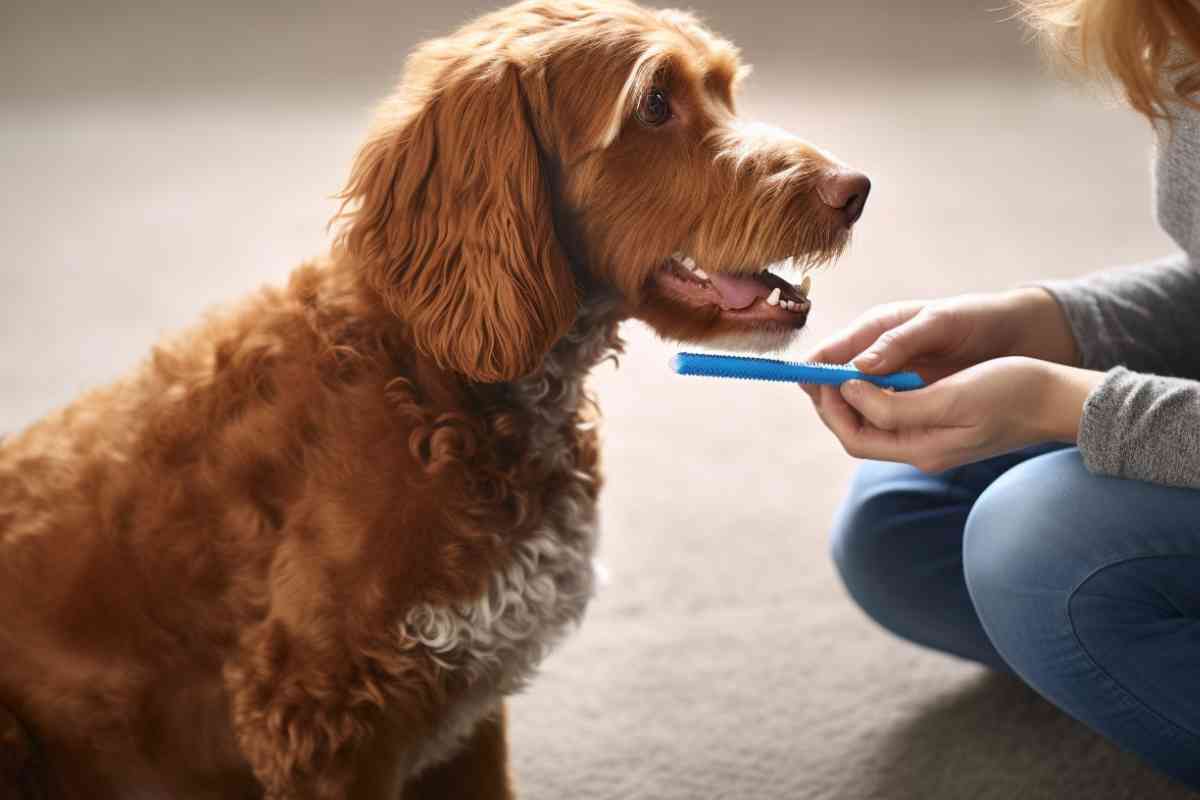
Apply the Toothpaste
Place a pea-sized amount of toothpaste on the toothbrush. It is advisable to use a toothpaste flavor that your Goldendoodle enjoys, making the process more pleasant for them.
Brush in a Circular Motion
Using a circular motion, brush the teeth gently but firmly, paying special attention to the back molars where tartar buildup is most common. Make sure to brush both the outer and inner surfaces of the teeth.
Don’t Forget the Tongue
After brushing the teeth, gently brush the tongue as well to remove any bacteria present and freshen the breath.
Reward Your Goldendoodle
Once you are done, reward your Goldendoodle with a dental treat to encourage good behavior and to further aid in cleaning the teeth.
Importance of Cleaning Your Dog’s Teeth
Dog dental health is similar to human dental health. If you don’t brush your teeth, you might get bad breath, yellow teeth, cavities, gum disease, and eventually tooth loss.
According to Colleen O’Moro, a Canadian veterinary dentist, dogs are much more likely to get gum disease than humans. Don’t assume that dogs are different and will keep their teeth for life without dental care.
A dog’s teeth and gums are still vulnerable to bacteria that can cause damage. Brushing the dog’s teeth can remove plaque and keep your dog’s mouth healthy.

Can You Use a Regular Toothbrush to Brush a Goldendoodle’s Teeth?
Human toothbrushes with soft bristles can be used to brush your Goldendoodle’s teeth. The soft bristles can effectively remove plaque build-up and tartar buildup from the teeth surfaces without causing any harm.
Moreover, they are readily available and come in various sizes, allowing you to choose one that best fits your Goldendoodle’s mouth.
Cons of Using a Human Toothbrush
Despite the benefits, human toothbrushes are not specifically designed for dogs. They may not reach certain areas in your Goldendoodle’s mouth as efficiently as dog-specific toothbrushes, potentially leaving some plaque and tartar behind.
Moreover, the bristle strength might not be suitable for removing stubborn tartar buildup in some cases.
Alternatives to Human Toothbrushes
If you decide that a human toothbrush is not the best option, there are alternatives available designed specifically for dogs. These include:
- Dog-specific toothbrushes: These are designed with bristles on all sides to clean more teeth at the same time, making the brushing process quicker and more efficient.
- Finger toothbrushes: These slip onto your finger, giving you better control and allowing you to reach all areas of your Goldendoodle’s mouth easily.
- Dental wipes: For days when brushing is not possible, dental wipes can be a quick alternative to help maintain your Goldendoodle’s dental health.
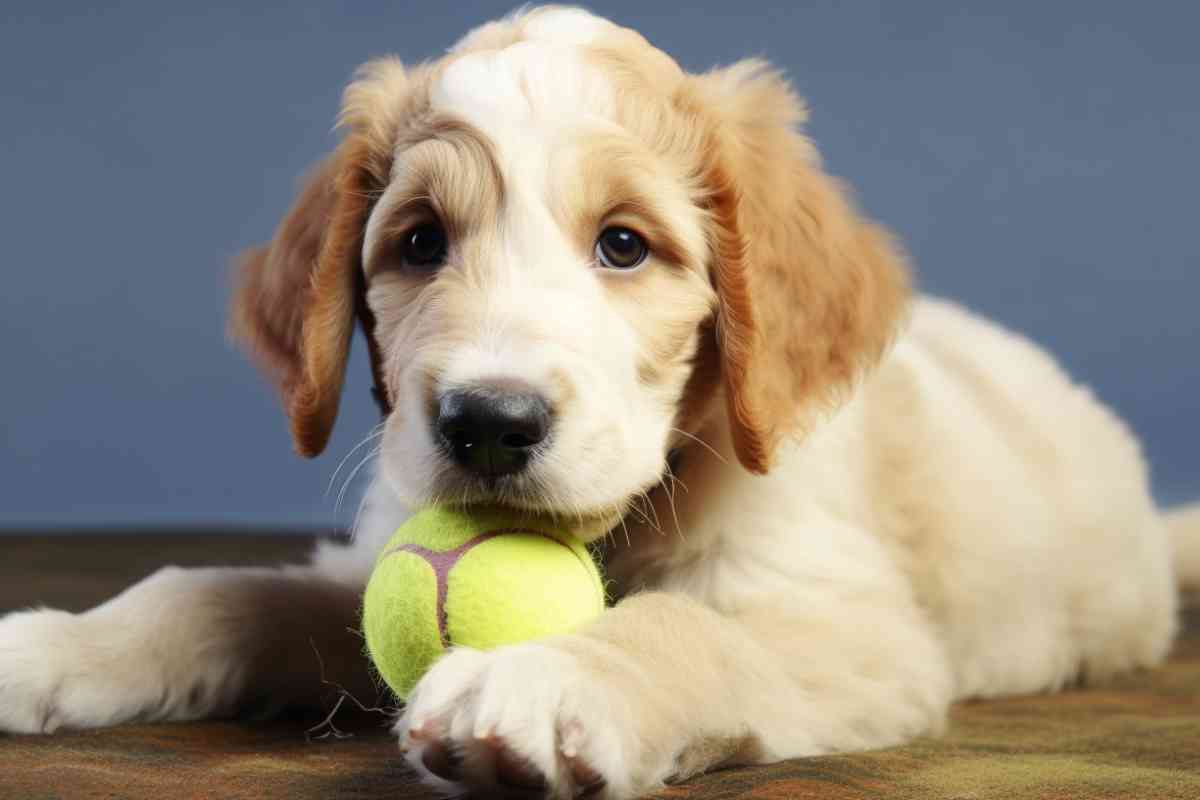
Can You Use Human Toothpaste?
No, some ingredients in human toothpaste can make your dog sick. Brushing your dog’s teeth without using any toothpaste often works reasonably well. It won’t get your dog’s breath minty fresh, but it will remove plaque.
Dog toothpaste is safe for your dog and helps clean its mouth. It may contain enzymes that kill bacteria, or at least scrubbing ingredients that remove plaque.
Do Dogs Hate Getting Their Teeth Brushed?
Usually, a dog can get used to getting their teeth brushed. Goldendoodles are patient and obedient, so they usually won’t be bothered by it. If you start brushing a dog’s teeth early, it will accept it more easily than an adult dog.
Remember that Goldendoodles need physical activity to be calm and happy. Take your dog for a walk, or a game of fetch, and it will be relaxed enough to let you brush its teeth. Reward your dog afterward.
Dog Chews and Dental Health
While some chew toys can be bad for a dog’s teeth, others can protect them. Bad chew toys include bones, antlers, tennis balls, cow’s hooves, ice cubes, and sticks.
Rubber bones (but not nylon bones), thin rawhides, and dental chews are much better choices. Dental bones are the healthiest thing for your dog to chew on. They can rub away tarter and plaque.

Dental Chews and Suitability for Goldendoodles
| Dog Chew Type | Hardness | Suitable for Aggressive Chewers | Edible | Usage | Cost (Approx.) | Longevity |
|---|---|---|---|---|---|---|
| Bully Sticks | Medium | Yes, but monitor usage | Yes | Given as a treat for dental health and mental stimulation | $10 – $30 per pack | 1-2 weeks |
| Dental Sticks | Soft to Medium | Yes, designed for daily use | Yes | Daily to aid in dental health | $10 – $25 per pack | 1-2 weeks |
| Rawhide Chews | Hard | No, can break or dull teeth | No | Supervised chewing sessions to prevent choking hazards | $10 – $50 per pack | 2-4 weeks |
| Antlers | Very Hard | No, can break teeth | No | Supervised chewing sessions to prevent dental damage | $15 – $50 per piece | 1-3 months |
| Nylon Bones | Hard | No, can cause dental wear | No | Supervised chewing sessions to prevent ingestion of large pieces | $10 – $30 per piece | 1-3 months |
| Rubber Toys | Soft to Medium | Yes, safe for teeth | No | Play and chew sessions to provide mental stimulation | $5 – $25 per piece | 1-6 months |
| Himalayan Yak Chews | Hard | Yes, but monitor usage | Yes | Given as a treat for dental health and mental stimulation | $10 – $40 per pack | 1-2 months |
| Dental Treats | Soft to Medium | Yes, designed for daily use | Yes | Daily to aid in dental health | $10 – $30 per pack | 1-2 weeks |
| Pig Ears | Medium | Yes, but monitor usage | Yes | Given as a treat for dental health and mental stimulation | $15 – $30 per pack | 1-2 weeks |
| Fish Skins | Medium | Yes, but monitor usage | Yes | Given as a treat for dental health and mental stimulation | $10 – $30 per pack | 1-2 weeks |
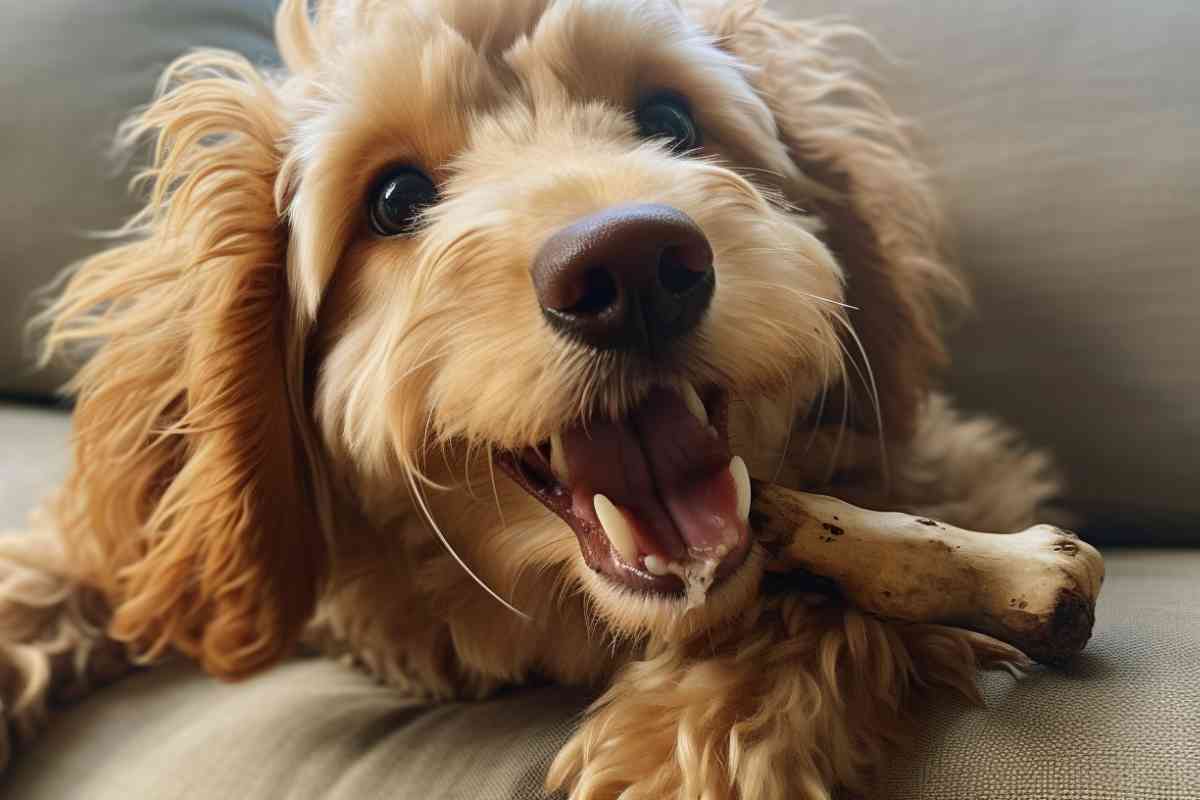
How Often Should I Brush My Goldendoodle’s Teeth?
Daily brushing is ideal for dogs. Brushing your teeth only once a week is much better than nothing. However, brushing once a day will keep your dog’s teeth clean and minimize the odds of dental disease.
Serious Dental Problems For Dogs
Dog’s dental problems progress through stages that eventually cause pain and tooth loss. A dog will first get gingivitis (inflammation of the gums) and then get periodontal disease (gum recession).
Periodontal disease will gradually destroy your dog’s gums and make their teeth loosen and fall out.
Gum Disease Stages
Gum disease has four stages in dogs. It is reversible in at least the first two stages and sometimes the third stage.
| Gum Disease Stage | Extent of Damage | Treatment |
| Stage 1 | Inflamed gums, but no real damage | Regular teeth cleaning, gum line cleaning |
| Stage 2 | Peridontal pockets appear between teeth and gums | More advanced treatment |
| Stage 3 | Peridontal pockets are deeper than 5mm and affect the bone | More advanced treatment or tooth removal |
| Stage 4 | Extensive bone loss | Tooth removal is necessary |
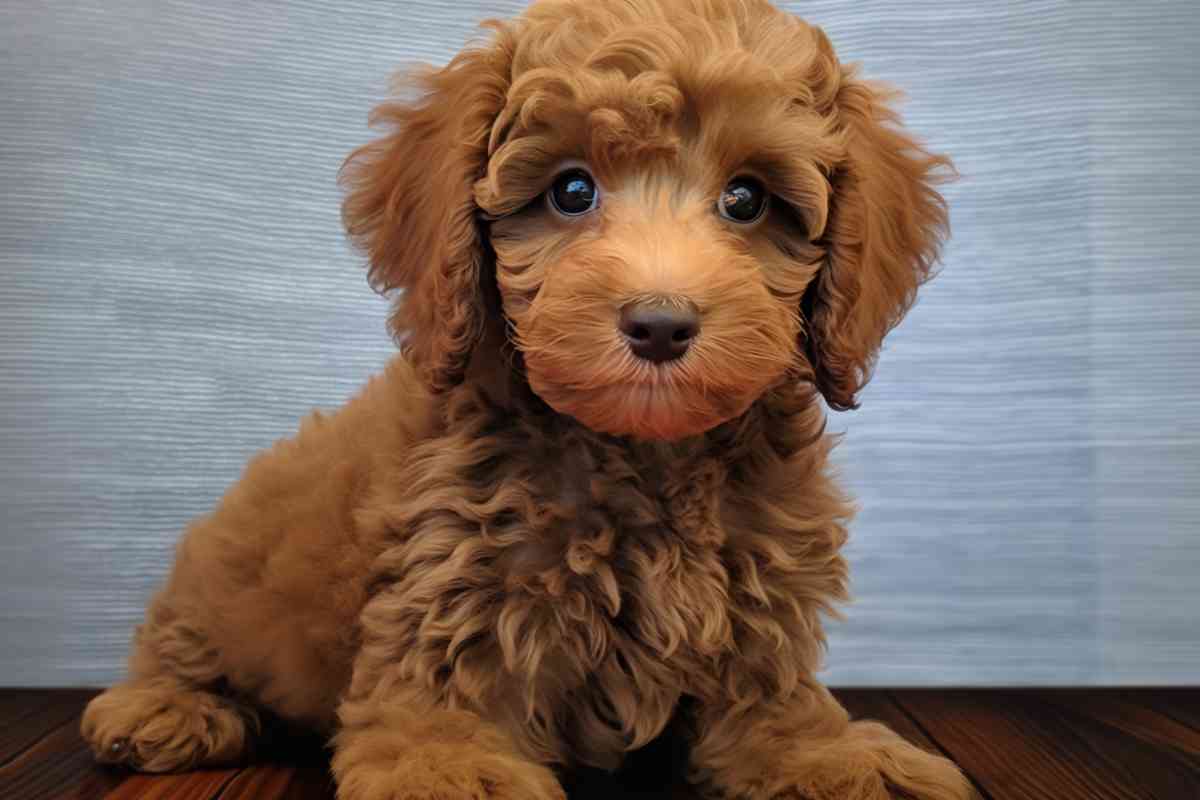
Complications of Severe Dental Disease
The health of your dog’s gums affects its overall health. Severe periodontitis can fracture your dog’s jaw through bone loss. Deep abscesses can also form in a dog’s teeth if the disease is untreated.
Bacteria from an infected mouth can travel to other parts of the dog’s body, including the liver and kidneys. Bacteria can travel through the dog’s bloodstream.
Eventually, the bacteria can cause heart disease. Some bacteria are associated both with dental disease and heart disease in dogs. In the long run, serious untreated dental disease can kill your dog.
Fixing Your Dog’s Dental Health
If your dog already has dental disease, they need professional dental cleaning. A dog dentist also needs to inspect the dog’s teeth and determine the extent of the damage. A dog might need fillings or might need some teeth pulled.
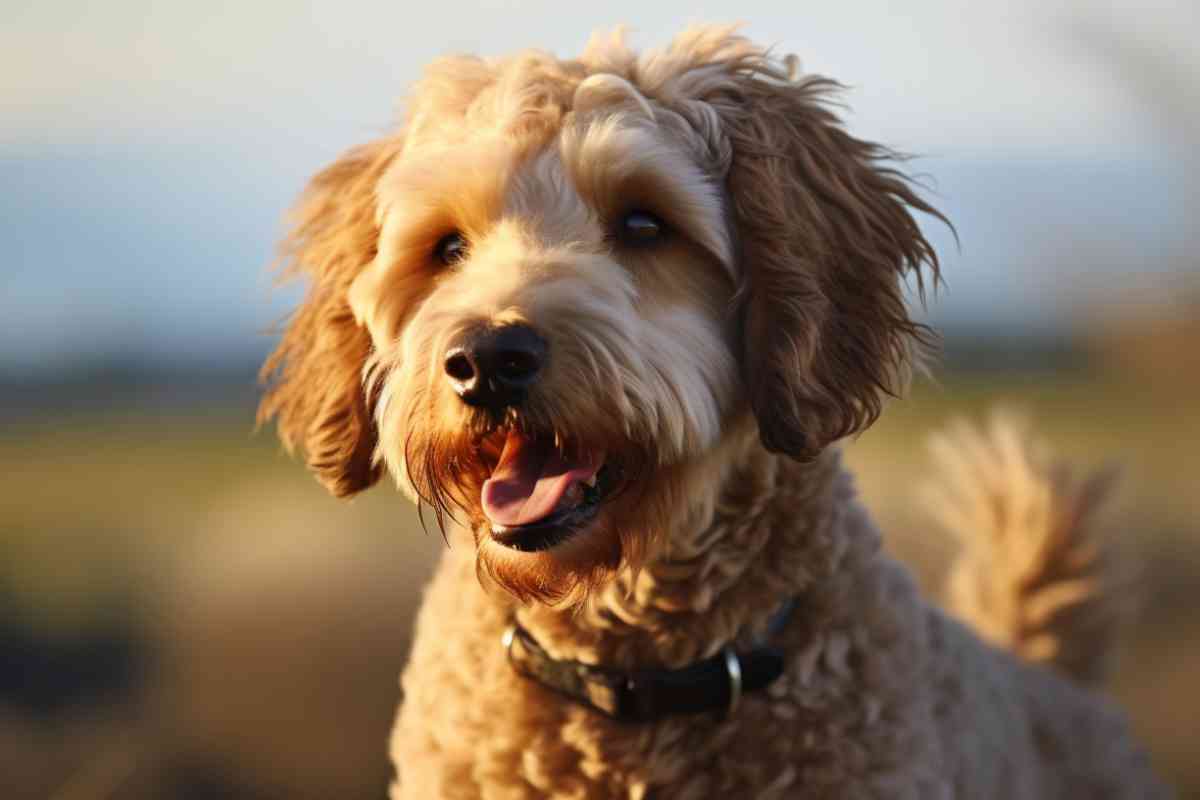
You can often prevent the problem from returning after your dog receives some dental care. Brushing your dog’s teeth and using a circular motion will keep the gum disease from returning.
Do Goldendoodles Still Need Veterinary Dental Check-ups if You Brush Their Teeth Daily?
As a Goldendoodle owner, you might be diligent in brushing your furry friend’s teeth daily to maintain their dental health. This is indeed a commendable routine, as daily brushing can significantly reduce the risk of dental issues such as plaque and tartar buildup, gum disease, and other oral health problems.
However, the question arises, is this enough? Do Goldendoodles still need to visit the vet for dental check-ups? Let’s delve into this.
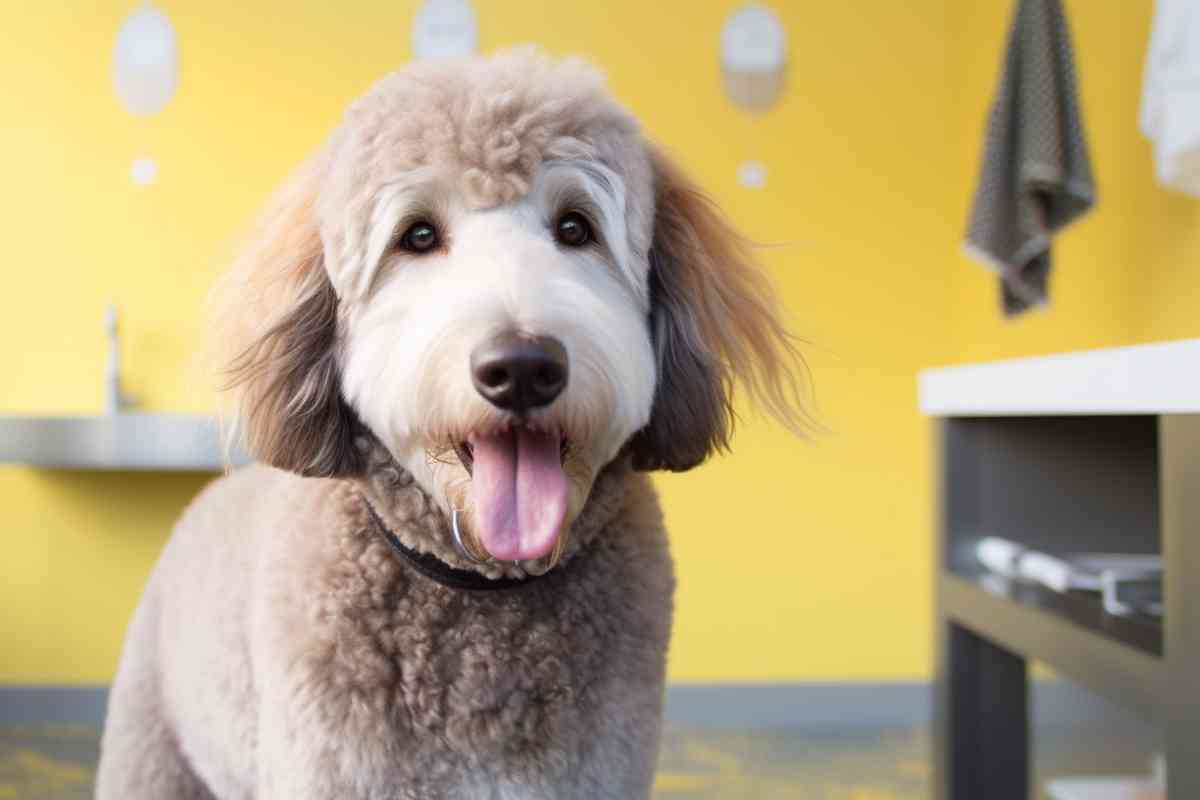
The Importance of Regular Vet Check-ups
Even with daily brushing, Goldendoodles should still have regular dental check-ups at the vet. These check-ups are vital in identifying any underlying issues that might not be visible or noticeable during home care routines.
Vets have the tools and expertise to perform a deep clean, reaching areas that are often missed during regular brushing.
Spotting Signs of Gum Disease and Other Issues
During a dental check-up, the vet can spot early signs of gum disease, which is often indicated by symptoms such as bad breath, red or swollen gums, and tartar buildup.
Early detection can prevent more serious complications down the line. Moreover, vets can identify and address other issues like broken teeth, oral tumors, or issues related to the tongue and upper lip, which are common in Goldendoodles due to their genetic makeup.
Professional Cleaning for Optimal Dental Health
A vet can provide a level of cleaning that goes beyond what is achievable with daily brushing. This includes removing calculus from the teeth, which is a form of hardened dental plaque, and a thorough cleaning under the gum line to prevent periodontal disease.
The vet might also recommend dental treats or dental sticks as a part of your Goldendoodle’s dental care routine to aid in maintaining their dental health.
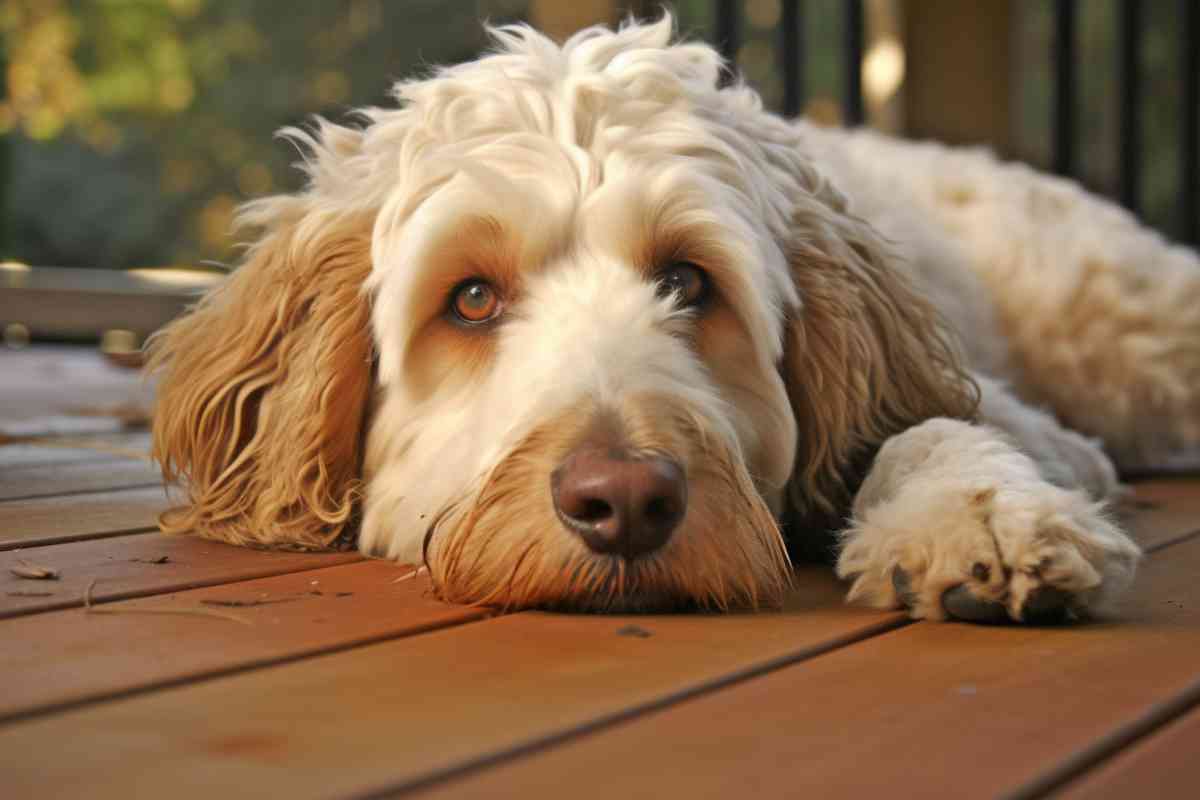
Personalized Advice and Recommendations
During a dental check-up, the vet can offer personalized advice based on your Goldendoodle’s individual needs.
This might include recommendations on the best toothbrushes to use, whether human toothbrushes are suitable, and guidance on the most effective brushing techniques to ensure that you are taking the best possible care of your Goldendoodle’s teeth at home.
What to Do If Your Goldendoodle Doesn’t Like Having Their Teeth Brushed?
Goldendoodles are known for their friendly and affectionate nature, but like all dogs, they can sometimes be reluctant to have their teeth brushed.
Maintaining oral hygiene is crucial to prevent dental issues such as tartar buildup and gum disease. If your Goldendoodle is resistant to teeth brushing, here are some strategies you can employ to make the process smoother and more enjoyable for both you and your furry friend.
Identify the Underlying Issue
First and foremost, it is essential to identify why your Goldendoodle is averse to having their teeth brushed.
It could be due to a bad experience, discomfort, or simply not being used to the sensation. Understanding the root cause can help in finding the right solution.
Introduce Dental Treats
If brushing is a no-go, introduce dental treats as a temporary alternative. Dental treats are designed to help clean your dog’s teeth as they chew on them.
They come in various flavors, making it a tasty way for your Goldendoodle to maintain dental health. However, these should not be a complete replacement for brushing but can be a good starting point.
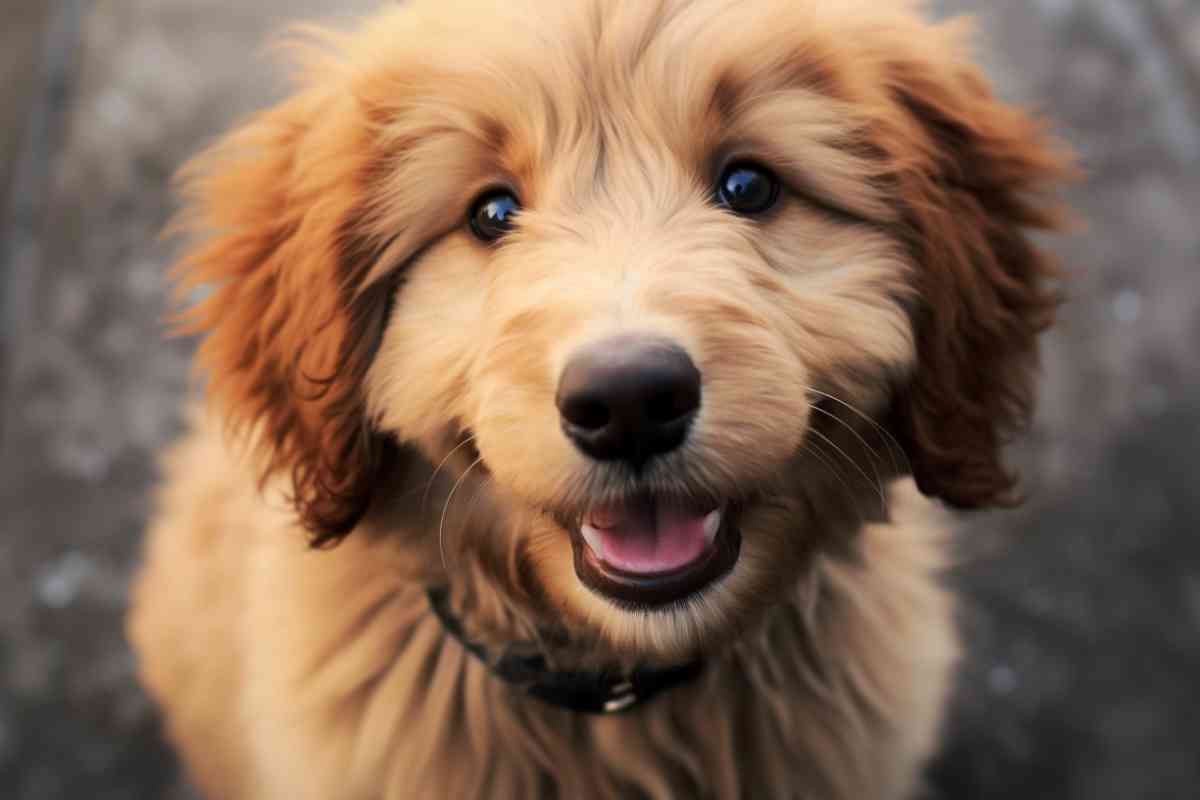
Use Dental Wipes
Dental wipes can be a gentler alternative to a toothbrush. They are soft and can be used to clean the teeth and gums effectively.
Start by lifting your Goldendoodle’s upper lip gently and wiping the teeth in a calm and soothing manner.
Experiment with Different Toothbrushes
Sometimes, the issue might be with the toothbrush itself.
You might want to try different types of toothbrushes, including finger toothbrushes that give you better control and are less intimidating for your Goldendoodle.
Create a Positive Association
Create a positive association with teeth brushing by offering rewards such as praise or a treat after each session.
Start slowly, initially focusing on brushing for just a few seconds and gradually increasing the time as your Goldendoodle becomes more comfortable.
Consult with a Professional
If all else fails, consult with a professional groomer or a vet to understand the best approach to maintain your Goldendoodle’s dental health.
They might offer solutions and tips based on their experience with other Goldendoodles.

What is the American Veterinary Dental College?
The American Veterinary Dental College (AVDC) has trained and certified dentists for dogs and other animals since 1988. They develop new dental treatments and instruments for dogs.
The organization points out that most dogs have peridontal disease when they are only three years old. This disease is preventable – you can use tooth brushing, professional cleanings, dog chews, and dental treatments to maintain your dog’s health.
Key Takeaways
- Brushing your dog’s teeth is a good idea.
- Your dog may also need to see a dog dentist.
- Goldendoodles are neither vulnerable to nor safe from dental problems.
- The same dental health practices that work for other dogs work for Goldendoodles.
- Dental health problems can lead to other health problems, including heart disease.